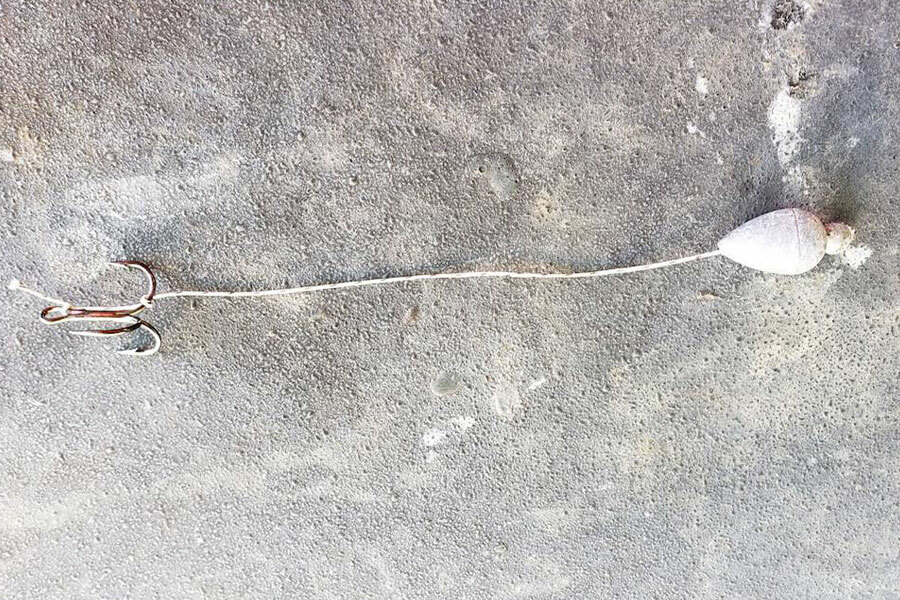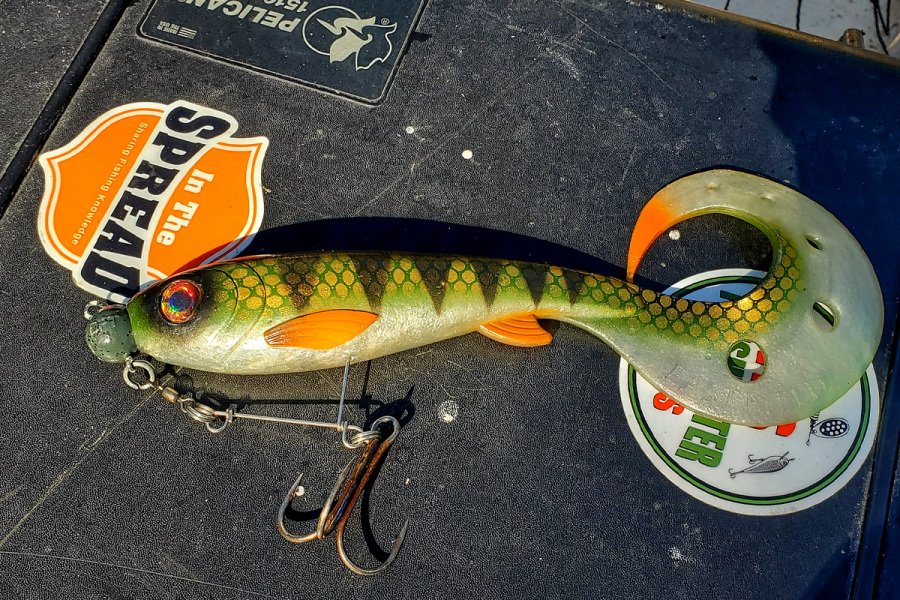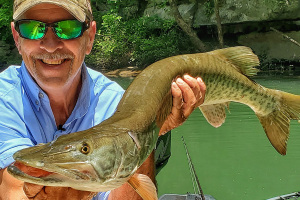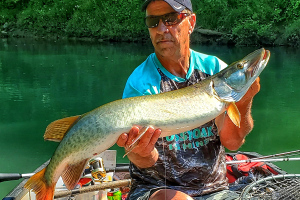Walleye fishing in the south is popular during summer, with fish typically hanging together in shallow water depths. Three methods include trolling crank baits, trolling motors, and night fishing under lights. Slow trolling techniques catch walleye, bluegill, catfish, and bass. Bug repellent is essential for effective fishing.

Summer Walleye Fishing - Dwayne Hickey
Here in the south, the walleye spawn is over and the fish are moving back down to the deeper reservoir and settling into the typical summer pattern. Center Hill lake offers some quality Walleye fishing throughout the summer period. These fish will settle into a summer "pattern", usually from 18 to 25 feet of water. Multiple fish will hang together in this depth throughout the summer.
Trolling Crank Baits
I have success catching walleye using three different methods on Center Hill lake. Trolling crank baits is a great way to get a lure down to the level of the fish. A small outboard motor works well to get your lure in the zone. Gravel type banks and flats that touch the original channel is a good way to catch "eyes". Steep, rocky banks are also a prime target for trolling. Adjust speed and amount of line being dragged behind the boat. If your trolling over 30 feet of water and the fish are suspended at 18 feet you don't want your lure constantly bumping bottom. Adjust the amount of line you have out and pull it through the strike zone. A depth finder or graph is a great tool to have when trying to find walleyes. Troll long enough and you will find your fish. Bass can also be caught using this method.
Slow Trolling for Walleye
My second choice involves trolling, but at a much slower speed. A trolling motor works perfect for this method. I rig up with a 3 way swivel. Main line to swivel, 18 inches of line attached to a 3/4 -ounce sinker. Use 24 inches of fluorocarbon line attached to your lure. The lure I use is a cat's paw and they come in many variations and sizes. A cat's paw is basically 8 inches of line, a few small orange beads a single small spinner blade with a number 2 hook. I attach a whole night crawler on the hook and start fishing.
Its important to understand that much less line is required for this trolling technique. You don't want to constantly bump bottom with this rig. Remember, the walleye should be suspended, so you want to pull the rig in the desired depth. Start by dropping the rig straight down beside the boat in at least 30 feet of water. Turn trolling motor on low speed and begin trolling. Again, a graph, depth finder or both is a valuable tool to have! You want your rig to be trolled at a steep angle with not a lot of line out behind the boat. Your sinker, (which will contact structure from time to time) is below the main line. I prefer to hold my rod at all times while using this slow trolling approach. The reason being I DONT LIKE LOSING RODS TO FISH!
This slow trolling technique not only catches walleye, but big bluegill, catfish and occasional bass.
Using Lights at Night
The third technique I use is night fishing under the lights. Pick a no moon, dark night and anchor over at least 30 feet of water. Hopefully, you drop anchor on banks you have recently caught walleye on while trolling. If not, look for steep, rocky banks close to feeder creeks. Night fishing using this method requires being anchored in one spot. Hang one or two lights over the boat, close to the water. Many types of floating fish lights are available at local tackle stores. I'm old school, so I prefer using two Coleman lanterns hanging over the boat. Either way, don't forget the bug repellent! The old saying is that light attracts bugs. Bugs attract bait fish and so on. A heavy presence of flying creatures can be expected on a warm summer night.
After you've settled in with anchors tight, lights in the water at sunset and rods rigged it's time for snacks and beverages. The wait can be long but rewarding. First thing after it's dark you'll begin to notice a few small minnows under the lights. As each hour passes, more and more baitfish will begin to "circle the wagon". Center Hill lake, and many other southern lakes are loaded with threadfin and gizzard shad. Before midnight, the threadfin should be abundant. Gizzard shad will also be under the boat, but deeper. These shad will continue to grow in number as the night progresses. I use two techniques to catch walleye under the school of shad that circle the boat. A silver buddy or Hopkins spoon are ideal for jigging when shad are under the lights. Use 12-14 pound test line. The idea is this: Thousands of fish are swimming in a circle under and beyond your boat. Your spoon is moving up and down the water column and "fluttering on the fall, making it an easy target compared to the swarm of bait circling the boat. Jigging depths will vary from just a few feet down, up to twenty feet, so experiment until you catch a fish.
Bonus Walleye Tactic
Another way to catch walleyes is to tie on a small treble hook with a long tag end remaining. Attach a strong swivel to the tag and clip on a half ounce barrel swivel. The sinker should hang about a foot under the hook. With the tag and sinker in hand, wrap line around one of the treble hooks. This will cause your treble hook to point up when hanging in the water. Let the rig down a few feet and begin "snagging" your bait! Once snagged, let out a few feet of line and hang on. Rod in hand at all times!Again, what you have is thousands of baitfish going the same way in a circle and ONE confused bait on the end of your line. From midnight until just before daylight you'll have your hands full catching fresh bait, and experimenting with drop levels. On a good night you can limit out on walleyes using this method. And, at daylight you have an hour of bass feeding on the shad you raised through the night.
It's a great way to spend a summer night on the lake. You may hear strange noises up in them hollers. Bugs may dine on you at will. Rewards can be great. Take a buddy or two and have food to eat. Coffee. Lots of coffee!
In The Spread is one of the world's premier sport fishing video companies and educational outlets for demonstration, explanation and insight on how to catch fish. Get inside access to our video library by becoming a member.













